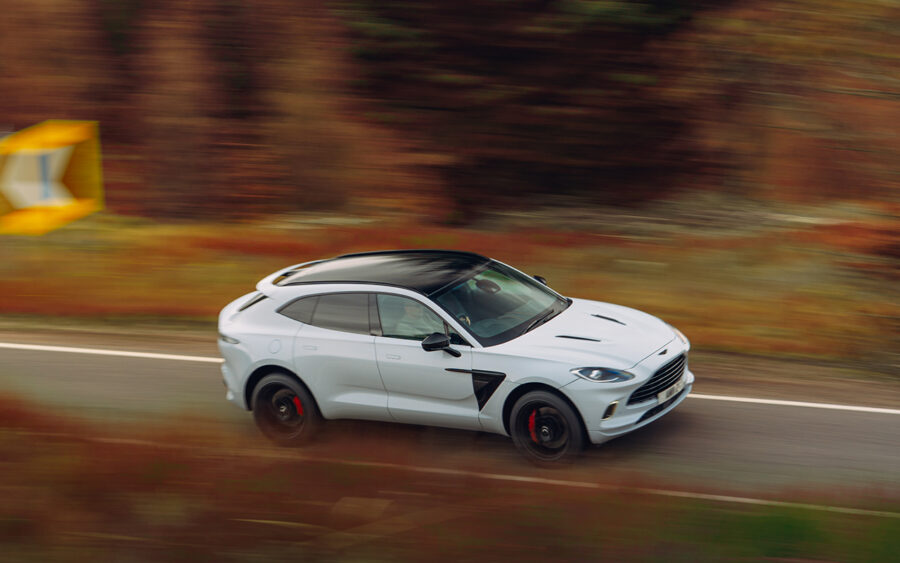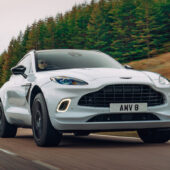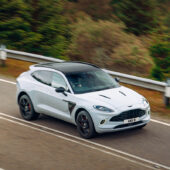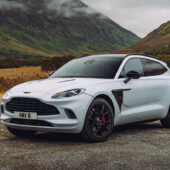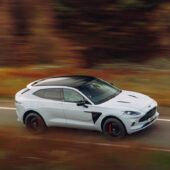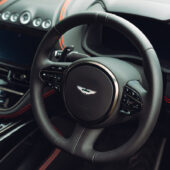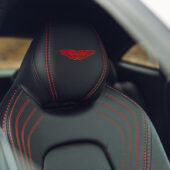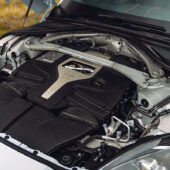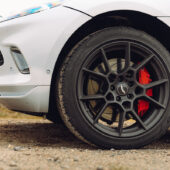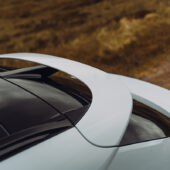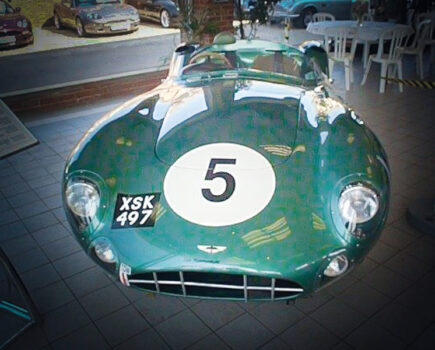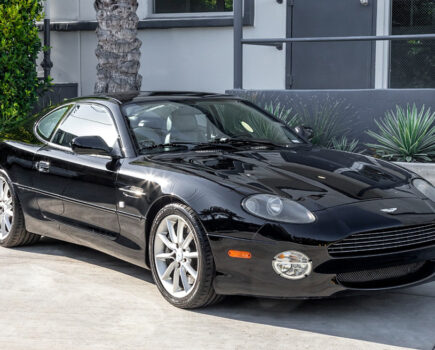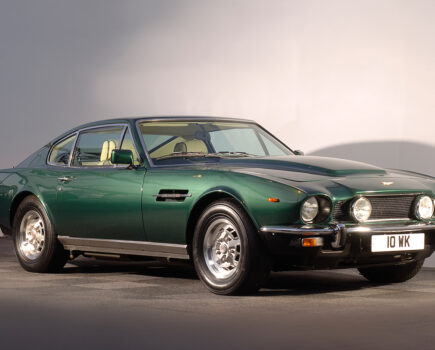The Aston Martin DBX was built to capitalise on SUV trends – but is it still a true Aston Martin? We head to Scotland to find out
Words: Kyle Fortune
The Aston Martin DBX is the car customers want and is crucial for the company’s continued survival. It’s only been available a couple of years now but the big SUV accounts for over 50 per cent of Aston Martin’s sales, and with the regular model weighing in with a price tag in excess of £160,000 that’s got to be good for the bottom line. It’s also doing a brilliant job in attracting new customers to the brand, with some 50 per cent of DBX owners having never owned an Aston Martin before. Compare the success of the DBX to the relative failure of the Rapide – Aston Martin’s four-door saloon that the DBX effectively replaces – and it’s obvious that, whether you agree with it or not, Aston Martin needs an SUV in its line-up.
Can an Aston Martin be an SUV – or an SUV a true Aston Martin? The DBX shares the company’s design language, the stylists in Gaydon having done a credible job of lengthening the familiar lines to work in an SUV application, although to do so they’ve necessarily been tight around the rear, removing some of the potential utility element from the ‘U’ of SUV. Nor can it wallow in the muck with quite the aplomb of something like a Range Rover. Instead, the DBX is sports car masquerading as a large SUV, with the promise of big performance and surprising agility mixed with the sort of practicality that’s never been seen in an Aston Martin before.
We pick up our DBX from Aston Martin’s Gaydon HQ with three days to experience it. A regular V8, with 550hp from its alloy quad-cam 4.0-litre twin turbo V8. That’s enough to propel it from 0-62mph in 4.5 seconds and on to a potential 181mph top speed, so it’s not exactly found wanting for performance. If that’s not quite enough – and it never is for some – Aston Martin will happily point you in the direction of the DBX 707, which develops 707hp, knocks 1.2 seconds off that benchmark sprint time and will reach 193mph if you happen to be running through Germany on the Autobahn.
We’re not heading south to the continent today to try that. Instead, the gaping grille is pointed north, with the intent to reach Scotland for a few days of exploration. Leaving Aston Martin’s Gaydon HQ we’re looking at a six-hour stretch behind the wheel, with stops only for fuel (petrol for the V8 and caffeine for us). The DBX whiles away the drive to the North with utter impunity; the sizeable 22-inch wheels and the thin side-walled tyres create little to no road noise, the ride proving impressively supple as the twin-turbocharged V8 barely ticks over at the UK motorway speed limit.
The cabin is typical Aston Martin – that’s to say beautifully finished if slightly quirky in its style, and using some recognisably borrowed (and previous-generation) infotainment from Mercedes-Benz. While it works, the infotainment isn’t the slickest; the promise within Aston Martin is that the DBX will be party to some improvements in this respect, although in all honesty decent Apple CarPlay or Android Auto connectivity plus a simple interface for the car’s own functions is all that’s required these days.
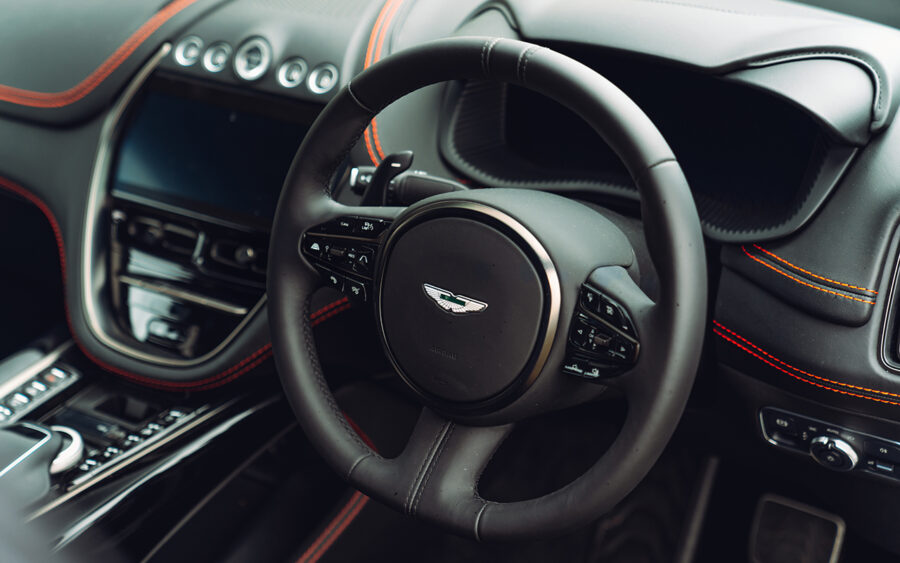
The car feels spacious; indeed, it feels big all-round, not just in relation to interior accommodation but on the road, the wide track and not-insignificant length contributing here. That’s not such an problem on a multi-lane motorway, but when we reach the less expansive tarmac that ribbons around, through and over Scotland’s high- and lowlands, it might present more of an issue.
While white wouldn’t be my first choice for the DBX – particularly with the colour-matched rather than black contrasting sills – it’s certainly different. Against Scotland’s mercurial backdrop, it should pop; a bright spot in the sometimes grim conditions that Scotland presents.
Stirling is reached with 350 miles covered and the DBX ejects us into our hotel bar feeling no worse the wear for our trip, the ease and comfort with which it’s shrunken those miles impressive indeed.
Stirling’s a pretty place but I know the roads north of here will deliver so much more. They’re roads I travelled when seeking snow for skiing as a student; roads I know well, and take any opportunity to visit. We’ll not be heading up to follow the North Coast 500, those roads so successful now that congestion can be an issue. The route hasn’t been planned as such, a somewhat laissez-faire idea to aim for those ski areas then head to Kylesku north of Inverness, where another overnight stop is booked.
Following the A84/A85 as it runs through Callander, the goal is to reach Crianlarich – also known as ‘the gateway to the highlands’ – which is situated about six miles north of Loch Lomond. The roads here are the equal of any in the world, the tarmac taking the path of least resistance, weaving and winding up, over, through and around the landscape, which gets ever more incredible the further north you travel. Glencoe Mountain resort is the first to awe, the mountain passed by the main road, but there are others behind it well worth a diversion. The weather, meanwhile, is doing its thing – which in Scotland means ever-changing, with clouds coming and going, changing the light and scenery by the second to phenomenal effect.
The DBX proves an enjoyable place to experience Scotland’s landscape from, the cabin’s elevated position and expansive glasshouse affording a great view of the scenery. The car’s chassis is equally adept at coping with the sinuous roads, and forgetting the views momentarily (as the DBX often goads you to) the gnarly soundtrack from the V8 is a glorious accompaniment on these incredible roads. The agility the chassis is able to muster is genuinely impressive, the wide track and finely judged suspension settings affording poise and agility on what are less-than-perfect surfaces.
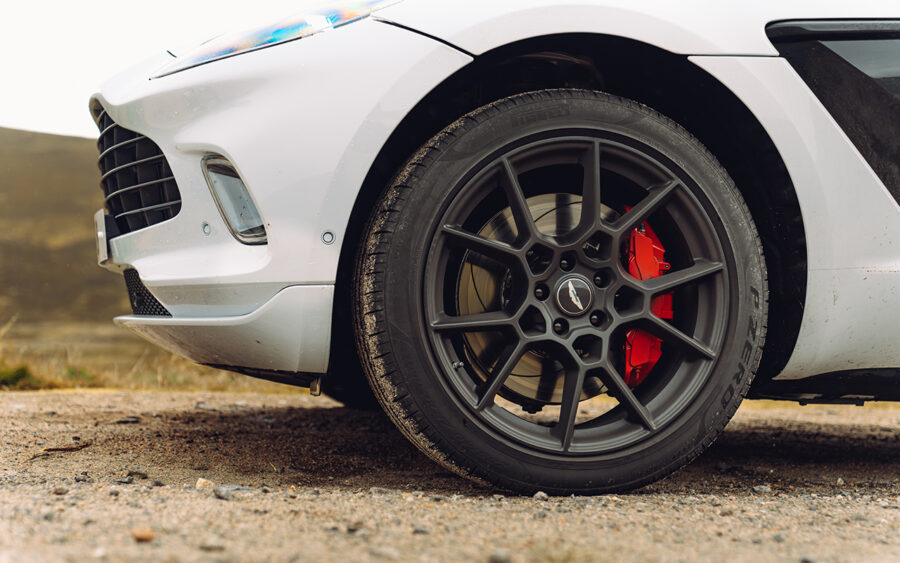
That precision is welcome not just because it’s enjoyable in itself, but because on the odd occasion where the DBX needs to share the relatively narrow tarmac with something like an HGV or a bus, there’s not much in the way of wiggle room. The car’s accuracy makes such instances relatively free of fear. On clear, well-sighted roads, the DBX carries its easily gained speed with an effortless competence that’s difficult not to be impressed by, the chassis and engine tuning such that they work beautifully in unison. The experience leaves us wondering why you’d ever need the additional power that Aston offers with the DBX 707.
Inverness is reached, the highland town our overnight stop before a quick run up the west coast in the morning to Ullapool and up to the Kylesku bridge. The weather’s less kind in the morning, those clouds from yesterday still here – only now they’re dropping their load. The rain is biblical but the DBX shrugs off the conditions; its four-wheel drive system might send drive predominantly to the rear axle, but it’s constantly monitoring the front too, apportioning drive to where it’s best utilised. It’s difficult to conceive of an Aston Martin that could be faster in such conditions.
Kylesku reached and crossed, the DBX revels in the coastal roads before they turn to single-track with passing places, signalling our point to turn around and head back through Scotland’s centre, up and over the hill routes that climb out of Granton-on-Spey, past the Lecht and Glenshee ski areas – which, being August, are lacking the snow that draw the crowds up here in the winter. They’re missing out today, because the deserted road that joins them is sensational, both to drive and look at, the DBX again proving the perfect companion to do so. Descending out of those hills, the roads get busier and the towns bigger as we spear south.
Leaving Scotland’s incredible roads behind, with around 1,000 miles travelled so far, and another 400 or so to return to Gaydon, it’s a measure of the DBX that instead of immediately joining the motorway, the drive south is taken via the roads of the Scottish Borders. This empathically answers the question of whether or not an SUV be an Aston Martin, and vice versa. The answer is yes – and much more.

